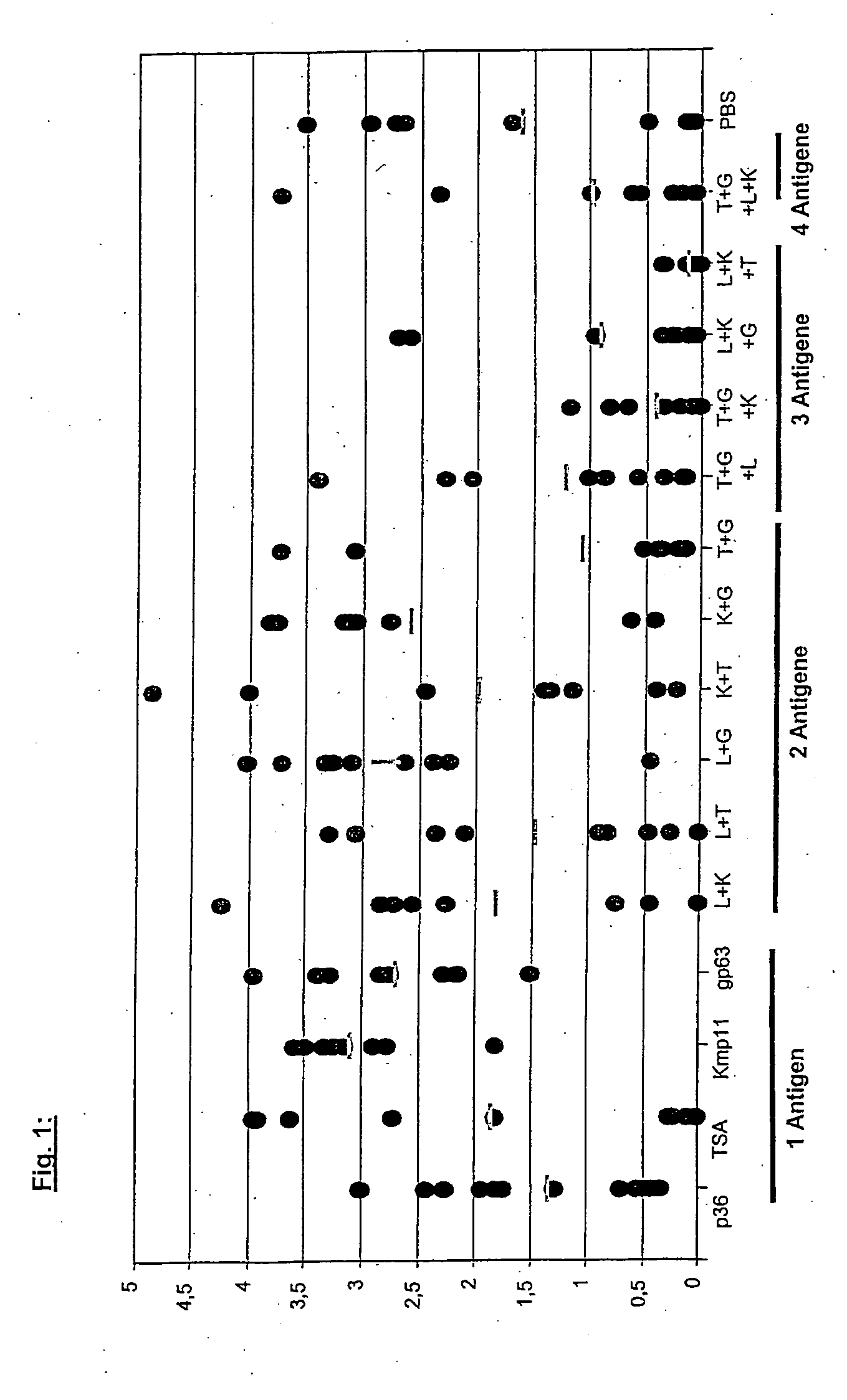Agent for treating leishmania infections
a technology for leishmania and agents, applied in the field of agents for treating leishmania infections, can solve the problems of affecting the survival rate of patients, and affecting the survival rate of patients, and limiting the use of leishmania in patients with untreated visceral leishmaniasis (kala-azar)
- Summary
- Abstract
- Description
- Claims
- Application Information
AI Technical Summary
Benefits of technology
Problems solved by technology
Method used
Image
Examples
example 1
[0094] Starting from the plasmid pSCp36 two fragments were amplified by PCR:
1. PCR ca. 800 bp;Primer left:5′-TTATATGGTACCATGAACATACGAGGGTCACCTPrimer right:5′-TTATATGAGCTCAGAAGACACGGACAGGGACCTCTTCCGTCG2. PCR ca. 950 bp;Primer left:5′-TTATATGGTACCATGAACATACGAGGGTCACCTPrimer right:5′-TTATATGAGCTCTTACTCGGCCGTCGGAGATGG
[0095] The PCR product derived from the second PCR reaction was digested with Eco31I and the smaller fragment (approx. 200 bp) was isolated.
[0096] The PCR product from the first PCR reaction was digested with BpiI.
[0097] The 200 bp fragment and the digested fragment from the first PCR reaction were ligated and subsequently digested with KpnI and SacI, and inserted by ligation into the pMOK vector that had been digested by KpnI and SacI. The resulting plasmid was named pMCVp36.
example 2
[0098] The gene was amplified by PCR from cDNA of Leishmania infantum. The PCR product was cloned into pMCV1.4 and sequenced after digestion with KpnI and XhoI. THe resulting plasmid was named pMCVKpm11.
Primer left:5′-ATTATAGGTACCATGGCCACCACGTACGAGPrimer right:5′-TTAATTCTCGAGTTACTTGGATGGGTACTGCG
example 3
[0099] The gene was amplified by PCR from cDNA of Leishmania infantum and one base substituted without changing the amino acid sequence deleting an Eco31I cleavage site. The final PCR product was digested with KpnI and XhoI and cloned into the vector pMCV1.4 followed by sequencing. The resulting plasmid was named pMCVTSA.
left Primer:5′-AATTATGGTACCATGTCCTGCGGTAACGCCAAGATCright Primer:5′-AATATACTCGAGTTACTGCTTGCTGAAGTATCCTTCGACleft mutation primer:5′-TACCGCGGTCTCTTCATCATCGright mutation primer:5′-ATTGGGGGTCTCGATGAATAGACCGCGGTAGG
PUM
| Property | Measurement | Unit |
|---|---|---|
| size | aaaaa | aaaaa |
| size | aaaaa | aaaaa |
| temperature | aaaaa | aaaaa |
Abstract
Description
Claims
Application Information
 Login to View More
Login to View More - R&D
- Intellectual Property
- Life Sciences
- Materials
- Tech Scout
- Unparalleled Data Quality
- Higher Quality Content
- 60% Fewer Hallucinations
Browse by: Latest US Patents, China's latest patents, Technical Efficacy Thesaurus, Application Domain, Technology Topic, Popular Technical Reports.
© 2025 PatSnap. All rights reserved.Legal|Privacy policy|Modern Slavery Act Transparency Statement|Sitemap|About US| Contact US: help@patsnap.com


